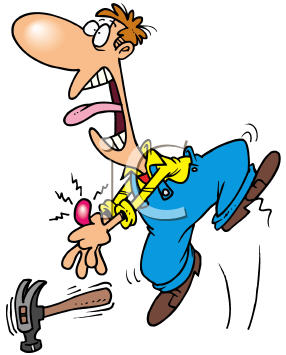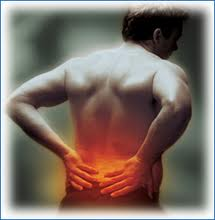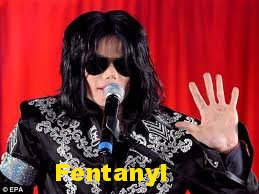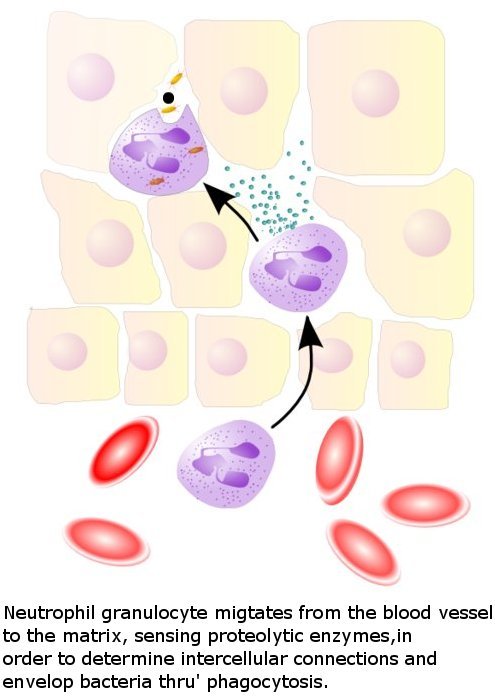Compiled by Walter
Posted September 05, 2010 updated November 12, 2011. Disclaimer The information presented here is for informative and educational purposes only and is not intended as curative or prescriptive advice.
Chronic pain is the leading cause of disability in the United States
"Today, pain has become the universal disorder, a serious and costly public health issue, and a challenge for family, friends, and health care providers who must give support to the individual suffering from the physical as well as the emotional consequences of pain." NINDS: Pain Fixing pain with medications may be the wrong way to do it! Barron: Pain killer truth This article briefly reviews pain and the way to deal with it.
![]() is an unpleasant feeling we get when we stub a toe, burn a finger, put
iodine on a cut, sprain an ankle, bump the funny bone or get a headache.
"Ouch ... it hurts! It is the "hurt" that gets our immediate
attention and not what may be causing the pain. The pain can be so
overbearing that it numbs our ability to think and to function.
is an unpleasant feeling we get when we stub a toe, burn a finger, put
iodine on a cut, sprain an ankle, bump the funny bone or get a headache.
"Ouch ... it hurts! It is the "hurt" that gets our immediate
attention and not what may be causing the pain. The pain can be so
overbearing that it numbs our ability to think and to function.
Pain warns us that something isn't quite right, that we should stop or slow down whatever we are doing. Taking a pain killer like an aspirin numbs the sensitivity to pain and actually predisposes us to more possible harm. A pain killer usually gives you a false sense of temporary relief!
 But pain is only one of the sensory symptoms that
tell us that
something is wrong with our body. The first real reaction of the body to injury
or infection is inflammation or "swelling" that takes place instantly.
Inflammation begins by increased blood flow to the injured tissue causing increased
temperature, redness, continuing blood flow causing more swelling, and increasing
tenderness and pain.
But pain is only one of the sensory symptoms that
tell us that
something is wrong with our body. The first real reaction of the body to injury
or infection is inflammation or "swelling" that takes place instantly.
Inflammation begins by increased blood flow to the injured tissue causing increased
temperature, redness, continuing blood flow causing more swelling, and increasing
tenderness and pain.
Inflammation:
"is a response from your immune system to an irritant or injury. For example, if you sprain your wrist, your immune system creates a protein called Circulating Immune Complex (CIC). The CIC accumulates near the injury and causes pain and swelling.
The pain informs you of the injury or damage (in case you didn't already know!) and the swelling prevents you from moving it and causing more injury. The swelling also allows for an enhanced supply of fresh blood, antibodies and the cells needed to repair the damage and complete the healing process." Foucher: pain relief
Inflammation doesn’t occur only in allergic reactions; it flares up whenever your body feels threatened, in response to a bruise, cut, bacteria, or virus as well as to otherwise harmless pollen, dust, or food. Scientists now believe that much of our immune systems is found in our digestive tracts, where many of these inflammatory reactions occur in the form of stomachaches, cramping, nausea, bloating, and vomiting. Ironically, the immune system’s inflammatory reaction—meant to heal and protect the body—often causes more problems than the initial “invader.”
Cause of Pain: Inflammation causes pain. Pain is not a cause; PAIN is a symptom of a problem!
Injury, irritation or infection increase the white blood cell flow to an affected area. Blood accumulates in the injured area causing swelling or inflammation and heat.
The swelling in turn, creates pressure on the
nearby sensory cells. These cells send a message to the brain and
the message is perceived as pain and discomfort.
Causes of Inflammation: Foucher: pain relief
- Unaddressed pain and injuries
- Toxins in our air, water and food
- Poor nutritional habits
- Bacterial or viral infections
- Allergies
- Prescription medications
- Auto-immune diseases
- Negative mental and emotional stress
Over time, if inflammation is not controlled, symptoms of chronic inflammation can show itself as various forms of osteoarthritis, colitis, chronic fatigue, sinusitis, cataracts, chronic pain, hair loss, heart disease, stroke, Alzheimer's and dozens of other ailments and conditions.
Here is a simplistic explanation of the beginning of natural body healing ... inflammation that may include all or some of the symptoms of redness, temperature, swelling, and pain.
U-Tube: ACUTE INFLAMMATION 2009:
Managing Pain with Natural pain killers:
 There are many natural body pain-killers or analgesics.
The focus will be on endorphins as these can very quickly bring relief from
pain without side effects:
There are many natural body pain-killers or analgesics.
The focus will be on endorphins as these can very quickly bring relief from
pain without side effects:
Enkephalius: present in the brain and spinal chord; involved in pain perception. Have a very short-term effect.
Seratonin: helps to suppress pain. Regulates behavior and mood: a high concentration causes calmness while a low concentration causes hyperactivity.
Endorphins: are produced by the pituitary gland and the hypothalamus in vertebrates during exercise, injury, excitement, pain, consumption of spicy food and orgasm, and they resemble the opiates in their abilities to produce analgesia [ block feeling of pain ] and a feeling of well-being.
There are four kinds of endorphins and they affect the body differently. Our knowledge about pain and endorphins is incomplete -- superficial and speculative. Below is a simplistic and incomplete summary about endorphins:
| Kind | Duration | Function |
| Alpha | 15-30 mns | suppresses pain temporarily e.g. as in an accident |
| Beta | 3 - 4 hours | analgesic effect: suppresses pain for
long time 10 times more powerful than morphine e.g. high levels before and during child labor |
| Gamma | short-term | opposite effect of Beta heightens sensitivity to pain |
| Meta | short term | short-term pain relief |
Endorphins and other painkillers (heroin, morphine, codeine) act mostly to stop receptors from signaling severe, persistent pain. They do not cause dependence and addiction like drugs. Another significant difference is that endorphins are short-lasting unlike externally administered drugs which tend to act for long periods.
Researchers have found that vitamin D and its co-factors are needed to synthesize endorphins. Persons deficient in vitamin D have insufficient amounts of endorphins and consequently, be hyper-sensitive to pain.
Reversing this relationship and providing adequate vitamin D and its co-factors, like magnesium, calcium and vitamin C, tends to minimize the feeling of pain; and bring relief from inflammation as in arthritis, menstrual cramps, fibromyalgia, injuries and back aches. Vitamin D can bring relief to pain better than prescribed medications that often have side-effects.
Three main sources of vitamin D: food, supplements and sunshine. Although it is possible to get vitamin D through foods or supplements, it is not easy. We get very little vitamin D stored in food. Vitamin D taken as supplements can be expensive. But Vitamin D from sunshine is free and readily available; all you have to do is get 10 to 15 minutes of sunshine on 40% of your body, between 11:00 am - 2:00 pm three times a week. It is impossible to synthesize too much vitamin D in your body from sunlight exposure: your body will self-regulate and only synthesize what it needs. Click for more info on Vitamin D.
Please be aware that vitamin D by itself will not relieve pain. Vitamin D needs co-factors to help it make things happen in the body. That is, co-factor deficiency even though there may be sufficient vitamin D present, could result deficiency of endorphins and other body problems. Co-factors work together to make things happen in the body.
Relieving Pain:
There are may ways to get relief from pain [ other than taking pain-killers ]. Eating a nutritious diet is a good start. Exercise can improve blood flow to the affected area, thereby relieving the swelling and pain. Other helpful healing activities include meditation, rest and sleep.
You need to remove the cause of pain. Taking a painkiller does not alleviate the cause of pain. For example, the common sense approach to get rid of pain caused by drug overdose [ poisoning ] is to get the poison out of the stomach by pumping out the stomach contents or inducing vomiting. Once the poison has been removed or neutralized, the immune system kicks in and starts healing the body. No pain killers are needed as: no cause, no pain!
 Our medical problems begin when doctors begin to treat the symptom of pain without relieving the cause of the pain.
Pain and injury may be treated with medication but the suffering continues.
Wiki: pain
|
IIASP: pain
Our medical problems begin when doctors begin to treat the symptom of pain without relieving the cause of the pain.
Pain and injury may be treated with medication but the suffering continues.
Wiki: pain
|
IIASP: pain
 One of the undesirable outcomes of chronic pain therapy is patients often
ending up taking narcotic-type pain medication such as morphine, fentanyl or oxycodone.
Such patients often become addicted and find it difficult to function in society.
There is evidence that vitamin D therapy may be an important way to fix
chronic pain therapy.
Gandey: Vit D link chronic pain |
Nauert: Chr pain Response to vit D
|
Turner: Vit D & pain
One of the undesirable outcomes of chronic pain therapy is patients often
ending up taking narcotic-type pain medication such as morphine, fentanyl or oxycodone.
Such patients often become addicted and find it difficult to function in society.
There is evidence that vitamin D therapy may be an important way to fix
chronic pain therapy.
Gandey: Vit D link chronic pain |
Nauert: Chr pain Response to vit D
|
Turner: Vit D & pain
The travesty of suffering from pain is that much of the pain can be prevented or minimized without medical prescription. Cannell ideal level vit D | Gandey: Vit D link chronic pain | Garland: Studies advocating prevention The human body does most of the healing by itself!
Your feedback on this article is most appreciated. Thank you: E-mail author
References:
Barron Jon, "The Painful Truth about Pain-Killers," The Baseline of Health Foundation, May 20, 2010. Barron: Pain killer truth
Cannell John, "What is the ideal level of 25(OH)D?" Wellsphere. Cannell ideal level vit D
Cleveland Clinic, "Inflammation: What You Need To Know," Cleveland Clinic: Inflammation
Endorphins
Foucher Ray, "A Healthy Lifestyle Now -- Can Help You Avoid Future Pain," Natural
Pain Relief Guide,
Foucher: Health Advice Gandey Allison, "Chronic Pain Linked to Low Vitamin D," Medscape Medical
News, March 25, 2009.
Gandey: Vit D link chronic pain
"Turner MD, from the Mayo Clinic in Rochester, Minnesota: "Many patients who have been labeled with fibromyalgia are, in fact, suffering from symptomatic vitamin-D inadequacy."
Pain Med. 2008;9:979-984.
Abstract Turner MD: "The preliminary results suggest that inadequate vitamin D may play a role in creating or sustaining chronic pain."
Pain Med. 2008;9:979-984.
Abstract Garland CF, Garland FC, Gorham ED, et al., "The Role of Vitamin D in Cancer Prevention."
Am J Public Health. 2006;96:252.
Garland: Studies advocating prevention Lamphier Loretta, "Natural Ways To Reduce Inflammation," Oasis Advanced Wellness.
Lamphier: reduce inflammation Marino Melissa, "Collateral Damage," Lens [ Vanderbilt University ], December, 2004.
Marino:
Inflammation Damagee
"Inflammation begins when white blood cells—mast cells, neutrophils, macrophages—residing in tissue respond to the site of an injury or infection. They produce waves of chemicals—called inflammatory “mediators”—that can kill germs and sound the alarm for other populations of inflammatory cells."
Inflammation is a complex, multiple signaling phenomenon, but it can be broken down into three basic groups of mediators: reactive oxygen species (ROS) such as hydrogen peroxide and “free radicals” (atoms with unpaired electrons); eicosanoids including the prostaglandins and leukotrienes; and protein messengers called cytokines.
The production of free radicals by neutrophils and macrophages is called oxidative or oxidant stress, and it is a critical part of infection control.
Oxidative stress goes hand in hand with inflammation. The first response is the neutrophil or macrophage engulfing a bacterium. Then, as a consequence, is the oxidative burst that leads to the generation of hydrogen peroxide, superoxide and other free radicals that acutely damage the invading organism.
Medline Plus, "Pain." MedlinePlus: pain National Institute of Neurological Disorders and Stroke, "Pain: Hope through research,"
NINDS: Pain Nauert Rick, "Chronic Pain Clients Respond to Vitamin D," Home News Psychotherapy News, Psych Central, March 23, 2009.
Nauert: Chr pain Response to vit D
Leavitt Stewart B., "Vitamin D – A Neglected 'Analgesic' for Chronic Musculoskeletal Pain: An Evidence-Based Review & Clinical
Practice Guidance," Pain Treatment Topics, June 2008.
Leavitt: Vit D & pain killer |
Leavitt: pain reliver Seratonin: "20 things you need to know,"
Seratonin: 20 things
Turner MK, Hooten WM, Schmidt JE, Kerkvliet JL, Townsend CO, Bruce BK., "Prevalence and clinical correlates of vitamin D
inadequacy among patients with chronic pain." Pain Med. November 11, 2008 9(8):979-84. Epub 2008.
Turner: Vit D & pain
[ Turner MD, from the Mayo Clinic in Rochester, Minnesota ] Vitamin D Council, "Chronic Pain," Vit D council: chronic pain Wikipedia, "Endorphins, Wiki: Endorphins
Beta-endorphins are produced by the pituitary gland and are believed to produce a greater "high" than the other types of endorphins. The beta-endorphin is generally believed to provide a considerable amount of natural pain relief. Some scientists believe it is due to beta-endorphins that some people who experience a traumatic injury, such as the loss of a limb, experience little or no immediate pain.
[ It is used as an analgesic in the body to numb or dull pains. That is the reason why humans start to feel better immediately after an acute physical trauma even though the symptoms are still present. The reason the pain dulls is because it binds to and activates opioid receptors. β-endorphin has approximately 80 times the analgesic potency of morphine.
Alpha-endorphins have been studied since the 1970's, but little is known about how they affect the body. Some research suggests that alpha-endorphins may stimulate the brain in ways similar to amphetamines and others claim that they may help treat anaphylactic shock and similar conditions.
Gamma-endorphins have also been researched since the 1970's, but most of the information on how the substance affects the body is pure speculation. Some studies show that they have antipsychotic effects on patients suffering from disorders such as schizophrenia, while others show that they may help regulate blood pressure.
How Do Endorphins Work?
Endorphins act by locking into receptors in the nervous system for chemicals that transmit pain messages to the brain. Once the endorphin, or the "key", is in the "lock," pain causing chemicals are prevented from transmitting their messages (Rathus and Nevid 2003). Endorphins interact with the opiate receptors in the brain to reduce our perception of pain, similar to the drugs morphine and codeine. The body's release of endorphins,however, does not lead to addiction like morphine and codeine might.
Wikipedia, "Inflammation." 2005. Wiki: Inflammation
Neutrophils migrate from blood vessels to the inflamed tissue via chemotaxis, where they remove pathogens through phagocytosis and degranulationMain article: Leukocyte extravasation
Various leukocytes are critically involved in the initiation and maintenance of inflammation. These cells must be able to get to the site of injury from their usual location in the blood, therefore mechanisms exist to recruit and direct leukocytes to the appropriate place.
The process of leukocyte movement from the blood to the tissues through the blood vessels is known as extravasation, and can be divided up into a number of broad steps:
Wikipedia, "Pain." Wiki: pain Zubieta Jon-Kar, "Study Gives First Glimpse Of Human Brain's Natural Painkiller System In Action ," July 16. 2001.
Zubieta: natural pain killers
Mayo Clinic research shows a correlation between inadequate vitamin D levels and the amount of narcotic medication taken by patients who have chronic pain.
This relationship is an important finding as researchers discover new ways to treat chronic pain.
According to the Centers for Disease Control and Prevention, chronic pain is the leading cause of disability in the United States. These patients often end up taking narcotic-type pain medication such as morphine, fentanyl or oxycodone.
This study found that patients who required narcotic pain medication, and who also had inadequate levels of vitamin D, were taking much higher doses of pain medication — nearly twice as much — as those who had adequate levels.
Similarly, these patients self-reported worse physical functioning and worse overall health perception.
"CONCLUSION: The prevalence and clinical correlates identified in this pilot study provide the basis for the assertion that vitamin D inadequacy may represent an under-recognized source of nociception and impaired neuromuscular functioning among patients with chronic pain."
Types of Endorphins: Wiki:types endorphins
β-endorphin is believed to have a number of other benefits, including:
Boosting the immune system
Slowing the growth of cancer cells
Promoting feeling of well-being
Increasing relaxation ]

"Study confirmed connections between pain-dampening changes in brain chemistry and the senses and emotions experienced by people in pain."